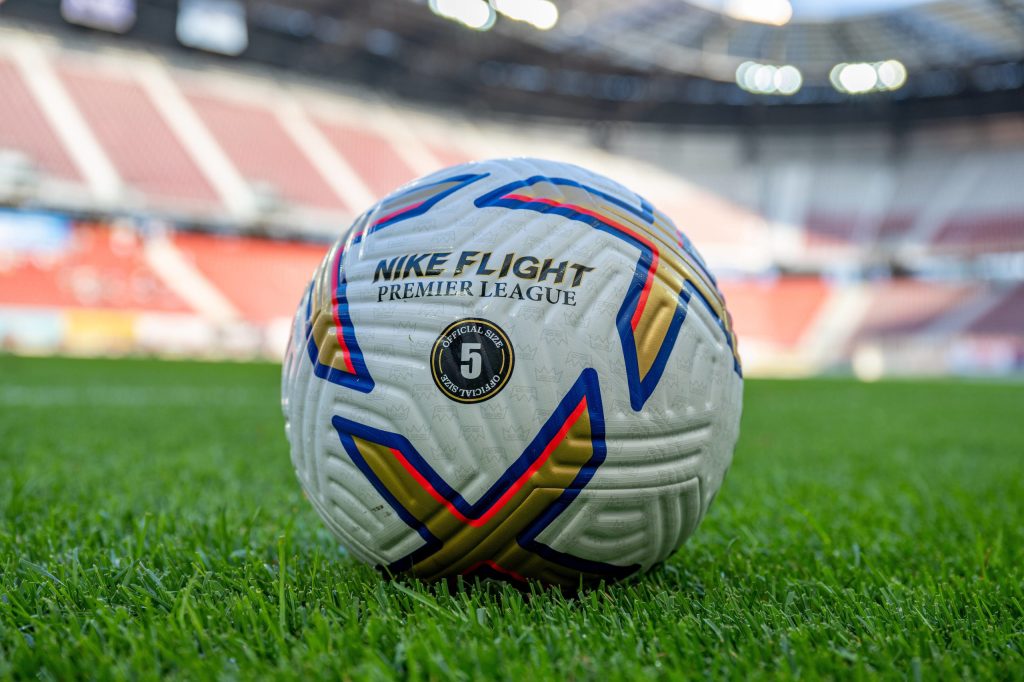Stabaek are enduring an inconsistent season in the 2020 Eliteserien and are resigned to losing star player Emil Bohinen before long. The team’s standout player this season, however, has arguably been captain Andreas Hanche-Olsen. The Norwegian youngster has continuously caught the eye this year, and this scout report will aim to show why it is the centre-back won his first call-up to his country’s senior squad this month using a combination of tactical analysis and statistics.
Role in the team
As already stated, Stabaek are struggling for consistency this season and coach Jan Jönsson has tried several systems and tactics. Of late Stabaek have typically lined up in a 4-2-2-2, though one thing that remains constant in the variable tactics is that Hanche-Olsen operates as the left-sided centre-back. This can be seen in his heatmap (below).
Hanche-Olsen is an all-round defender, capable of strong no-nonsense defending as well as being comfortable on the ball. He is right-footed despite his position on the left of the centre-back pairing but is comfortable defending both ways. The rest of this analysis will explore Hanche-Olsen’s defensive capabilities as well as his distribution and offensive threat from set-pieces. I will also look to address a weak area in his game.
Defending
Hanche-Olsen possesses all of the attributes required to defend efficiently. He’s quick, strong, and shows terrific anticipation and awareness. He’s a fluid mover, looking very comfortable when forced to run backwards or sideways. He also demonstrates terrific leadership qualities and communicates effectively with his defensive colleagues in order to maintain a good line.
The most noticeable part of Hanche-Olsen’s defending is his ability to put himself in the best position to cut out through passes and crosses. His pace and awareness are instrumental in his high interception numbers. In his most recent match against Odd, Hanche-Olsen recorded the highest number of defensive recoveries (16) with seven of these being interceptions. The following image shows Odd at the finishing stage of an attacking transition having won the ball back high on the left.
Hanche-Olsen had organised a strong defensive line on the edge of the area (highlighted blue) with his centre-back partner and the opposite-side full-back. When Stabaek lose the ball the trio are forced to drop back into the penalty area to prevent a goalscoring opportunity. Notice how Hanche-Olsen is a couple of steps further towards his own goal than his fellow defenders. This is due to his speed of both feet and mind, and he places himself perfectly to intercept the cross.
Hanche-Olsen’s pace and reading of the game also allows him to be very effective at defending against the ball played over the top or in behind the defensive line. His starting body orientation at around 45 degrees to the ball is perfect and ensures he doesn’t have to waste time turning before accelerating.
Hanche-Olsen is also extremely confident defending 1v1 with his strength being as crucial as his pace in these situations. Being positioned on the left side of a centre-back pairing, he is comfortable defending on the inside on his stronger right foot, though generally tries to show the attacker down the outside to limit the threat.
The above is an example of Hanche-Olsen showing his man outside and away from goal, thus limiting the threat to his own goal. His positioning here is superb as he is close enough to easily block any attempted pass or shot but not so close as to be easily caught out by a change of pace or direction from the attacker.
As we can see, the attacker realises he is being forced into a bad position and attempts to turn inside. Here is where Hanche-Olsen’s positioning (as discussed in the previous paragraph) becomes important. He is able to react easily to the change of direction and use his strength to hold off the opponent and win the ball, the timing of his tackle sublime.
The Stabaek captain’s timing of a tackle very rarely lets him down. His foul rate is low and from his 17 games played this season he has picked up only four yellow cards.
The final part of the Norwegian youngsters defending that’s worth mentioning is his tactical awareness. Whilst rarely coming out of the central-defensive funnel, he is able to spot weak zones and effectively and efficiently shift across the defensive line. Being right footed helps him enormously in this case.
In possession
Although some of Hanche-Olsen’s defending can be considered rather ‘old-school’ and ‘no-nonsense’, he very much encapsulates the term ‘ball-playing defender’. He possesses terrific composure and is a great exponent of the diagonal pass to the flanks. He is comfortable receiving the ball and turning out and is cool under pressure.
A look at his statistics shows nothing spectacular, though this is very much down to his team’s regularly changing tactics and arguable lack of identity. In the 2020 Eliteserien, he averages 42.31 passes per 90 with an accuracy rate of 87.66%. This number of passes ranks him only 36th amongst central defenders in the league, way off the likes of Bodø/Glimt’s Brede Moe (84.59 per 90). Though it’s well worth noting that Moe plays in a team who regularly dominate possession and recycle the ball amongst their centre-backs.
Hanche-Olsen also ranks similarly amongst his peers for progressive play, ranking 35th for both progressive runs (1.11 per 90) and progressive passes (7.55 per 90).
As already stated, these basic statistics are unremarkable for a player who has a reputation of being a very useful ball-playing defender, however, further inspection of his numbers reveal a little more. An average pass length of 23.5m ranks him 19th amongst centre-backs in the league and adds a little gloss to his passing accuracy (an abundance of shorter, simple passes would likely increase passing accuracy) but it’s the accuracy of his progressive passes of 40m+ that stand out the most. From Hanche-Olsen’s 52 attempted passes of this distance 45 have found their target, thus giving him a terrific accuracy rate of 86.5%.
As seen from the deeper dive into his statistics, it’s in the longer passes where Hanche-Olsen’s ball-playing ability comes to the fore. His long diagonal passes are often pinpoint and turn a seemingly non-threatening attack into a much more dangerous one. The below image shows one such occasion.
Here we can see the Stabaek captain play a 50m+ pass from inside his own half to the opposition penalty area with pinpoint accuracy. At least five opposition defenders are taken out of the game and, from a seemingly non-threatening position, Stabaek now have a winger 1v1 with a defender in the penalty area.
A slight problem that can occur with this type of pass is that given Hanche-Olsen is right-footed, he has to open his body up to play the pass to the opposite flank which offers a slight opportunity for him to be closed down. When playing on the right of the centre-back pairing (as he did for Norway U21’s) this issue does not arise and his distribution improves a little further, too.
It isn’t in just long cross-field passes where Hanche-Olsen excels, his starting of attacks with threaded passes into the midfield also catches the eye. He has the confidence to take risky options which could leave him and his fellow defenders exposed but generally proves the reward to be worth the risk. The below image shows an example of such a pass.
The final aspect of his passing worth mentioning, and one that is unobvious from statistics, is Hanche-Olsen’s knowledge of when to play simpler passes in order to disrupt the opposition’s defensive tactics. This is becoming a key part of a centre-back’s duties in the modern game and is a real strength of the Norwegian youngster. He is more than comfortable passing and receiving the ball to/from a fellow defender or the goalkeeper in tight areas and creating space for his team elsewhere on the field.
Threat from set-pieces
On top of his defensive and distribution qualities, Hanche-Olsen also rates a danger from attacking set-pieces. He has scored three goals (one penalty) in the 2020 Eliteserien from an xG of 2.68. From his 12 shots in set-piece situations, 58.3% have been on target. As the statistics show, he is very efficient at taking his chances when they arise.
What makes Hanche-Olsen such a danger in these situations is the timing of his run and jump. Generally starting from deep, his pace and power often allows him to get the run on his marker and rise highest in the penalty area.
The Stabaek captain usually looks to attack the back post from corners taken from either side and, as his statistics imply, is efficient at hitting the target when the ball comes his way.
Hanche-Olsen’s confidence, composure and ability to strike the ball cleanly also makes him a good penalty-taking option.
The goalkeeper manages to get a hand to this effort, though Hanche-Olsen’s penalty is struck crisply and powerfully enough for it to be too difficult to keep out.
The defender’s behaviour from set-pieces encapsulates his overall playing style. He is a dominant footballer with great determination and leadership qualities. He shows great confidence and desire and relishes a challenge.
Aerial duels
Despite his strength in attacking set-pieces, Hanche-Olsen sometimes looks a little suspect in defensive aerial duels. He is on the short side for a centre back at 185cm and can sometimes struggle from a standing start and/or when an opposition striker backs into him.
In the above image, Hanche-Olsen is favourite to win the duel from what was simply a hopeful pass down the line. He misjudges the flight a little and is beaten in the air as he struggles to jump far off the ground from a standing start.
The below image is taken following an opposition goal kick.
Here, Hanche-Olsen is uncomfortable with the opposition striker backing into him. The defender is too eager to try to assert himself in the duel and gives away a foul.
The next image is following another goal kick later in the same match, and the duel occurs in a very similar area of the pitch.
Anxious of giving away a foul this time, Hanche-Olsen keeps his hands by his side and is simply outjumped from a standing position.
His overall defensive duel success of 57.81% is indicative of him struggling to dominate in this area of his defending and must be improved upon for him to excel at a higher level. That his overall aerial duel success rate is higher at 63.77% shows that he is better attacking aerially than defending.
I believe it would be advisable for him to adapt his defending style in the above situations, allowing himself space to attack the ball from a running start.
Conclusion
Andreas Hanche-Olsen is a young Norwegian centre-back who excels in most areas of his defending as well in his distribution. He shows terrific organisational and leadership qualities and is comfortable playing on both sides of a centre-back pairing.
There are a few areas of his game that need to be improved upon for him to reach a higher level though, given his call-up into the senior Norway squad of late, he should have the resources to develop. Not least in training when likely to be defending against Borussia Dortmund’s Erling Haaland and his new Bundesliga colleague (and former EPL player) Alexander Sørloth.






